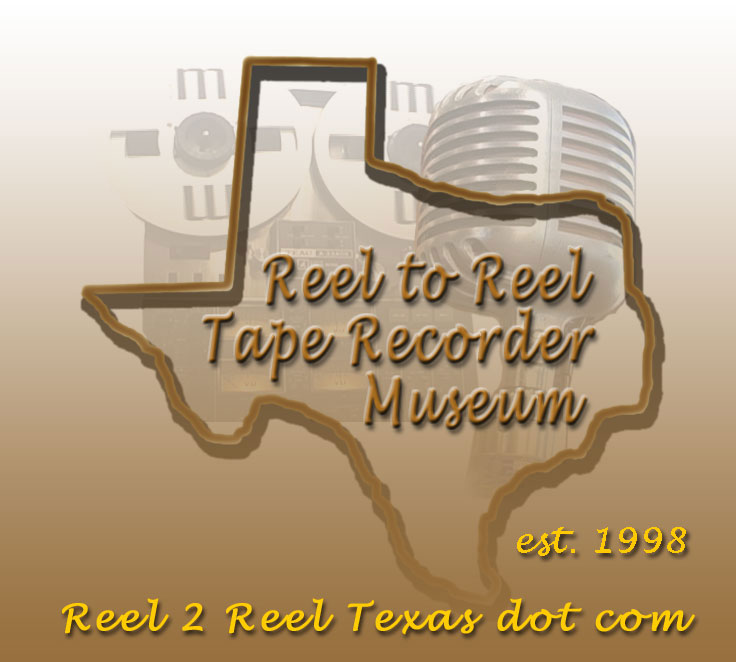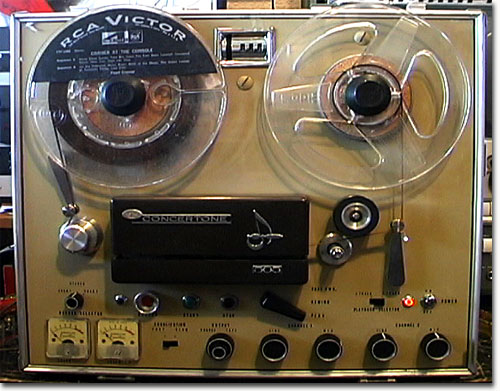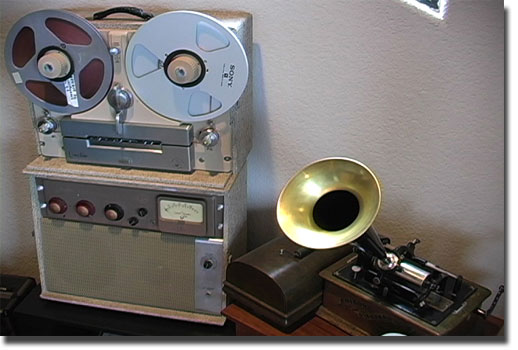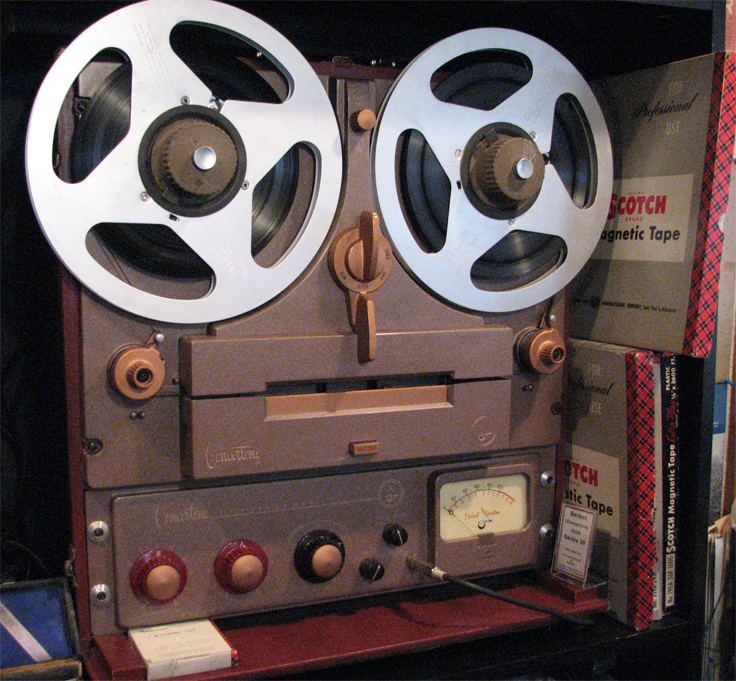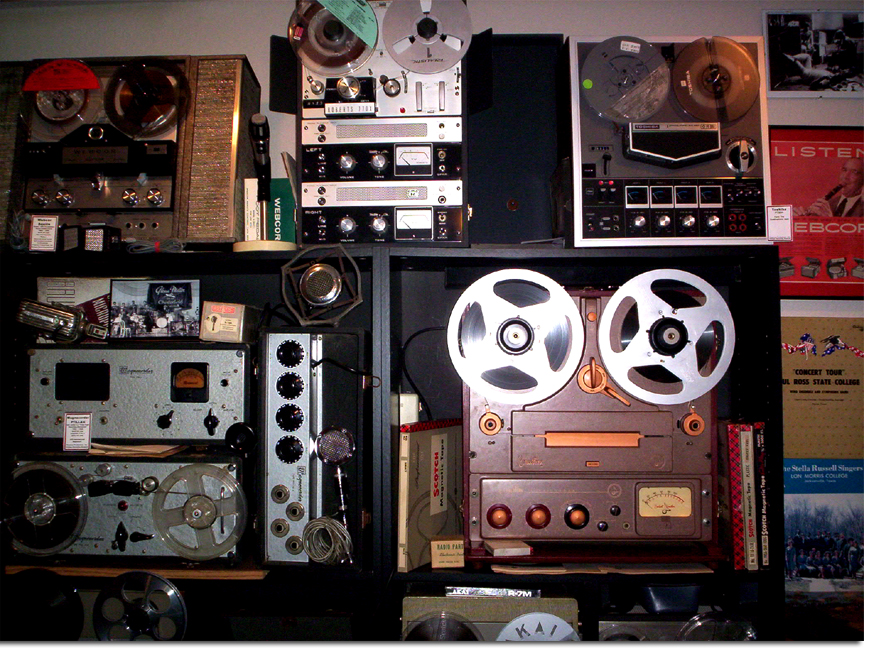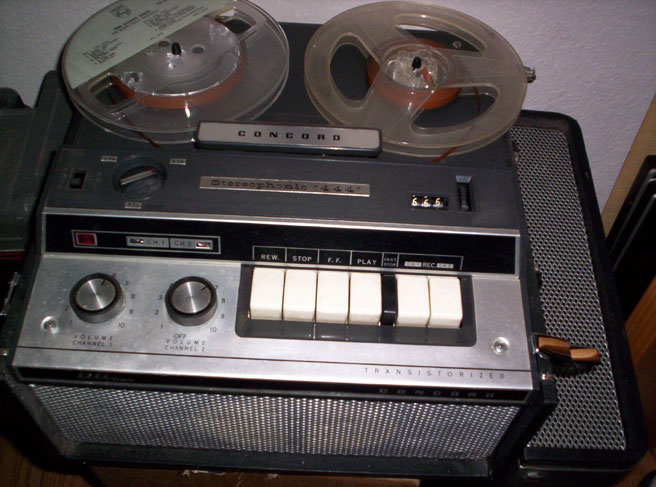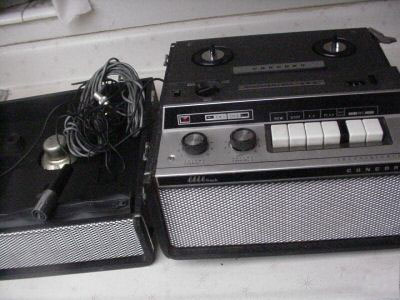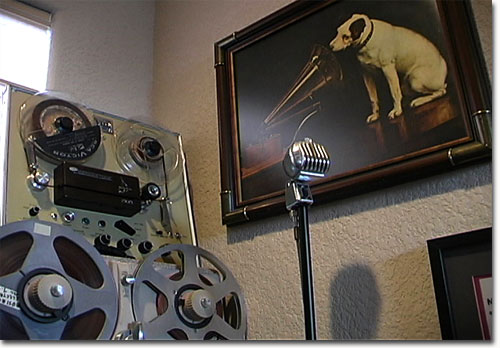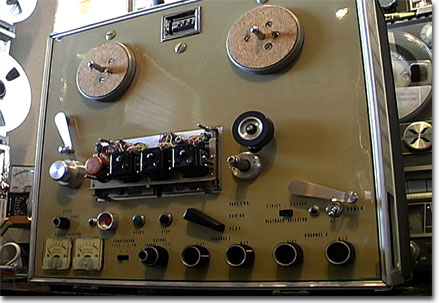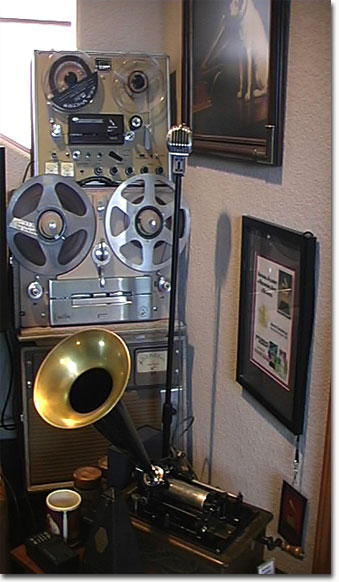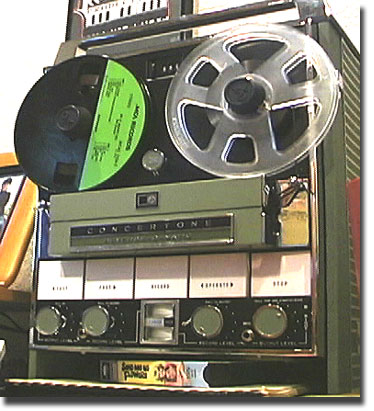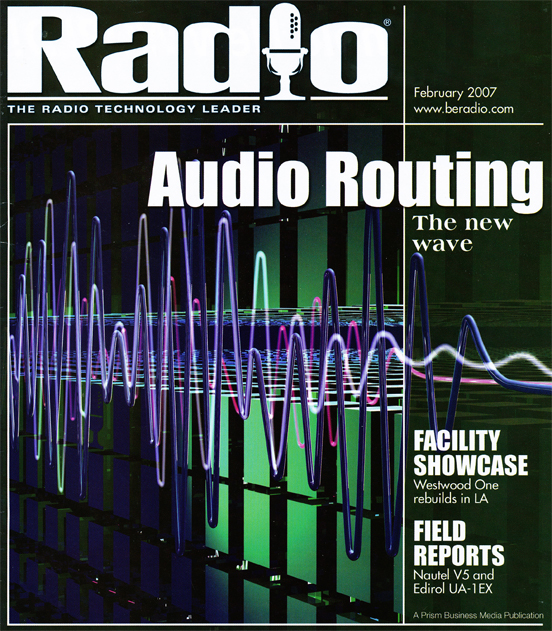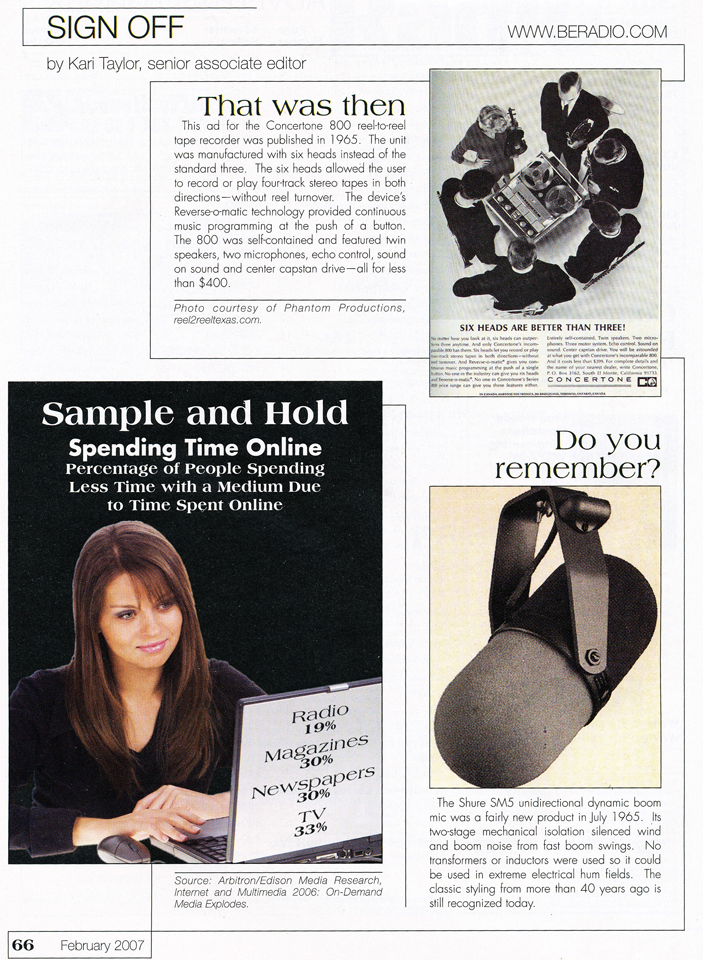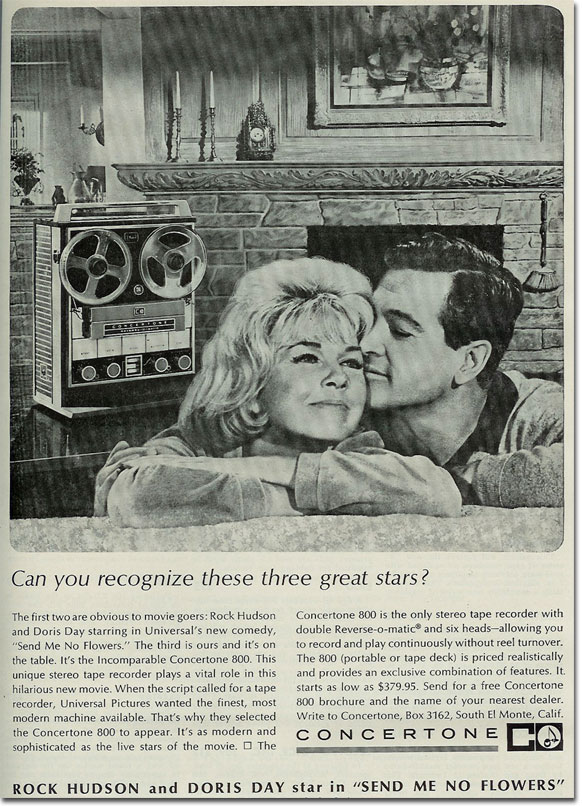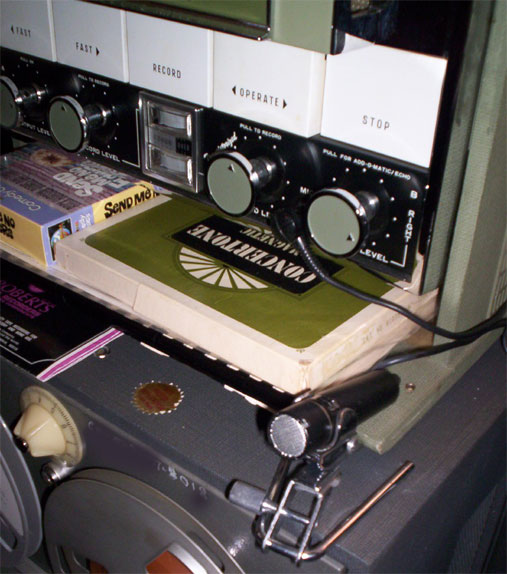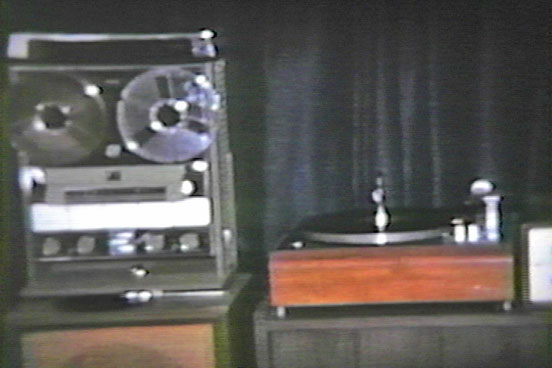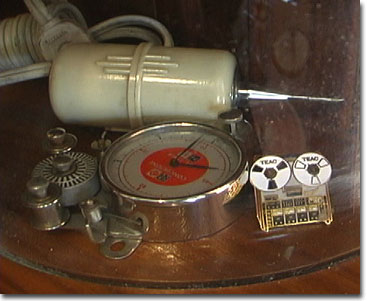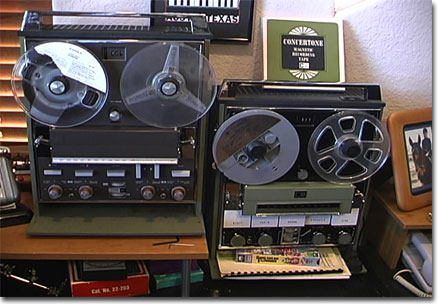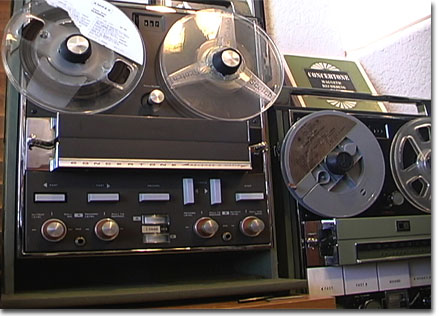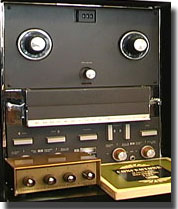Brelant/Concertone
Berlant Associates, 4917 West Jefferson Blvd., Los Angeles 16, CA
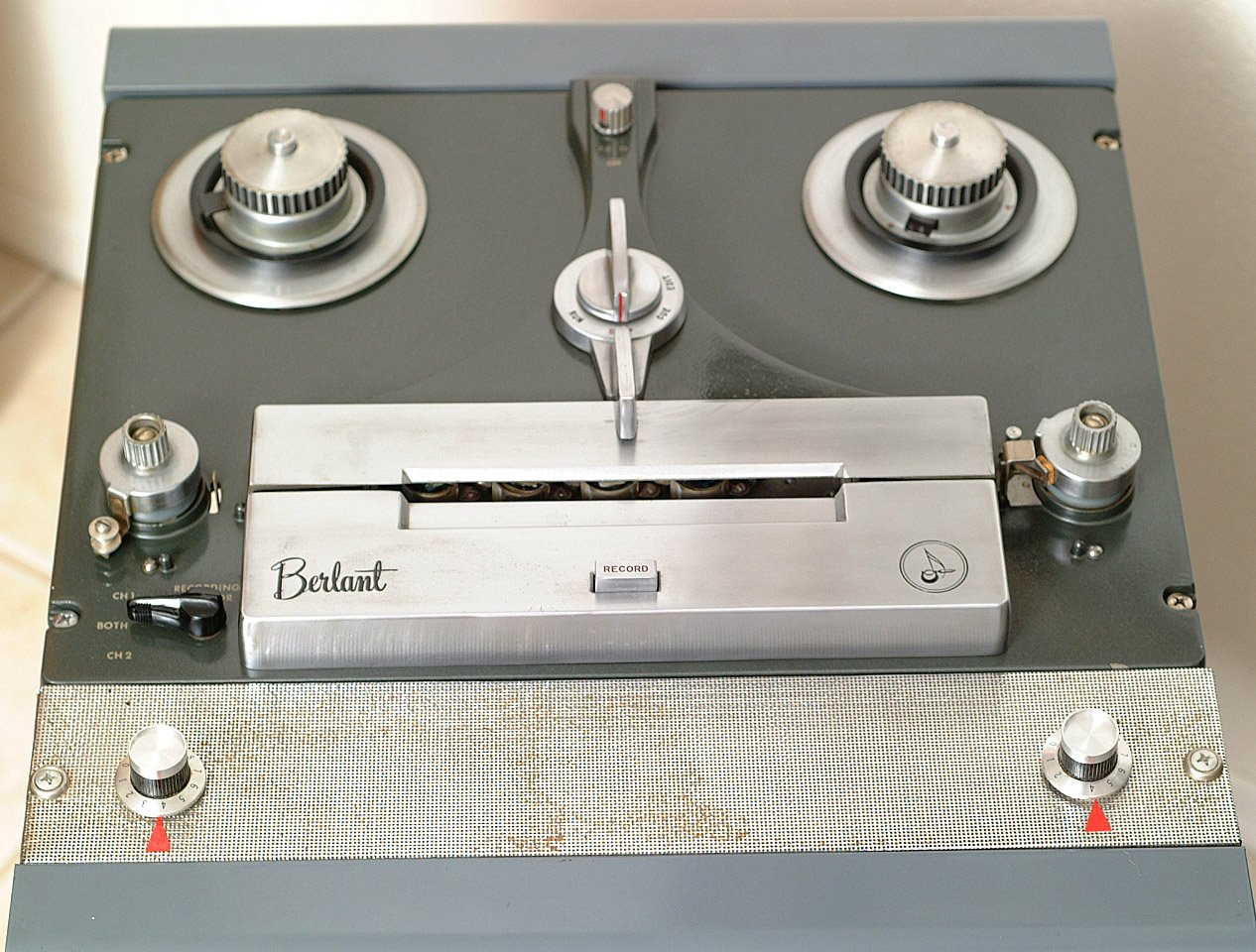 USA based hi-fi and audio company run by Bert Berlant, originally the trade name was Berlant, later Berlant-Concertone and finally just Concertone, primarily known for their open reel recorders and of those early designs were by Berlant himself and manufactured in the USA but later recorders from this company were rebadged TEAC products, company fizzled out in late 60's early 70's. Not to be confused with the French amplifier manufacturer named Concertone active in a similar/slightly later timeframe.
USA based hi-fi and audio company run by Bert Berlant, originally the trade name was Berlant, later Berlant-Concertone and finally just Concertone, primarily known for their open reel recorders and of those early designs were by Berlant himself and manufactured in the USA but later recorders from this company were rebadged TEAC products, company fizzled out in late 60's early 70's. Not to be confused with the French amplifier manufacturer named Concertone active in a similar/slightly later timeframe.
Despite the many horrors of World War II it brought forth many technological breakthroughs and pressed our countries greatest minds to contribute in their respective fields. Bert Berlant was a Signal Corps engineer with an open mind and the ability to implement non-conventional approaches to engineering problems. He developed a 70 mm combat camera for battlefield reconnaissance photography, a Robotron camera for the U.S. Medical Corps, and was a key contributor to many other important war time developments.
When the war ended, like so many other US engineers, Berlant was uniquely educated to contribute to consumer/professional technology industries. He started Berlant 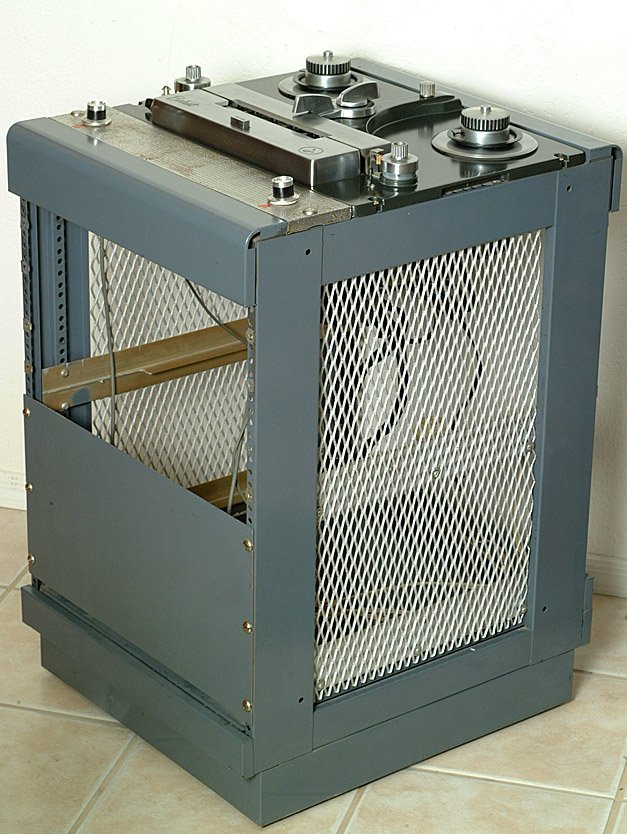 Associates Inc. in 1946 and began producing hi-fidelity and professional grade audio equipment. His components were of the highest quality and extremely innovative. Berlant particularly excelled in the field of magnetic tape recorders; today he is viewed as a leading pioneer of this format, helping to mature it into the professional standard.
Associates Inc. in 1946 and began producing hi-fidelity and professional grade audio equipment. His components were of the highest quality and extremely innovative. Berlant particularly excelled in the field of magnetic tape recorders; today he is viewed as a leading pioneer of this format, helping to mature it into the professional standard.
Two different product lines were produced by Berlant, the Concertone series for high-fidelity home music systems and the Berlant professional series, components for recording studios and radio stations. These tape decks are of outstanding design and build quality, rivaling the finest decks of the era from Ampex. Emmanuel Berlant left Berlant and Associates in 1956 to become president of Stephens Trusonic, Inc.
More: In the February, 1982 issue of Modern Recording and Music magazine, James Rayton with the Ascot Recording Studio in Hollywood, CA wrote:
"probably around the early '60s, the (Berlant/Concertone) assembly was moved to Japan, and around the same time, I believe, the company became known, paradoxically, as "American Concertone"; their product emphasis gradually moved into the mid-to-high-end consumer category, (and occasionally appeared under other trade names like 'Concord'). Whatever remains of the company today is perhaps better known as TEAC, who interestingly, continued making the old Concertone 90 at least through the late '60s, with only a change of nameplate (and probably solid-state electronics) and a different model number."
Also from on line comments (not verified) "Some history, Bert Berlant and his cronies founded Berlant/Concertone. Later on, Bert Berlant retired and the other partner continued the company. He elected to use Concertone electronics on the early machines but use Teac transports. Later on to the end of the company, American Concertone badge engineered various recorders. Berlant/Concertone decks to the early American Concertone decks with Teac transports, Semi Pro! Last American Concertones, Consumer decks".(tapeheads.net)
On line forum comments (not verified) Most of the Berlant Concertone machines were mono. Berlant Concertone tape recorders were really semi-pro decks. Beloved of dillettantes in the day. The original ones were entirely made by Berlant in the USA. The middle period used Berlant electronics (USA made) and Teac transports made in Japan. The last of the Concertones were made in Japan by various vendors. Teac didn't officially import their decks here until 1967 (also ReVox's first year sold in the USA). All of these machines are difficult to obtain spare parts for. The early and middle period decks are usually decent performers.
Those were made by TEAC about the time Berlant sold out to TEAC and was renamed American Concertone (ironic name change). It was also sold as the TEAC 507/508. 507 is the stereo version and 508 the moneo version. I have one each of the TEAC and Concertone versions.
April 17,2012 - an email from Jerry Norton about his information on Berlant Concertone (shared here with his permission)
Hello Martin,
I did receive the DVD's and do enjoy the nostalgia.
You asked about my thoughts on the Berlant/Concertone evolution. Here is the story according to my recollection and personal involvement.
In 1962 Berlant sold the Concertone line and rights to the name to "American Astro-Systems" a small Aerospace firm in South El Monte, CA. It was in this time frame, 1963 that I recall American Concertone licensed the rights to manufacture the Model 505 to TEAC (Tokyo Electro Acoustic Company) who as we know continued to manufacture this baseline through 1970. TEAC produced the 505 and some of the early Concertone recorder subassembly components in Japan as well as DOKORDER. However, the final assembly and checkout took place in the US (Culver City and South El Monte, CA). Berlant left the company in 1963.
After the acquisition the Concertone management team (Arne L. Berg / Kenneth M. Williamson) and and technical personnel (Deiter Brandt and Richard Schullenberg) were relocated from Culver City, CA to South El Monte, CA where Arne and Kenneth continued to pursue the development of an automatic tape reversing mechanism to permit bi-directional playback on an existing four track tape recorder having an asymmetrical capstan drive system . This tape drive technology evolved into the American Concertone 800 Series "Reverse-O-Matic" High-Fidelity consumer product line and it's little brother the AC or battery powered Model 727.
The parent company (American Astro-Systems) ultimately changed its focus in 1964 to militarized avionics and high environmental multi-channel recording products and became "Astro-Science Corporation." Astro-Science (then owned by Tracor Inc.) was later sold to "Bell & Howell" in the 70's and became part of the DATATAPE division. The recording systems produced became very specialized and primarily used in Airborne, Space and Shipboard applications. I was a key part of the engineering / marketing team starting at American Astro-Systems that evolved the Hi-Fi magnetic tape recording technology into the Military and Government program markets with the help of some early Co-axial reel tape drive mechanism developments (see attachment). In fact, the early airborne reconnaissance intelligence recording systems for the U2 and SR-71 aircraft during the "Cold War" were built by the Concertone / Astro-Science Corporation Engineering team.
The Concertone product line ceased production around late 1966 (Arne Berg and Kenneth Williamson departed) and the name was sold to Monarch Electronics International Inc. of North Hollywood, CA (and Japan) in 1968– where it resides today. Strangely, the 4 and 8 track tape players produced in 1969 by Monarch were marketed under the "Cal-Best Electronics" moniker. The Concertone name plate was never used on another audio tape recording product again and 1987 saw the end of consumer recorder production as we all knew it.
I have traced a history timeline of the Berlant legacy going back to 1951 when the Model 1401 was marketed under the "Berlant Associates" name.
Hope this information is of help to you.
Regards,
Jerry
Emmanuel "Bert" Berlant 1911 - 1985 (at right Bert Berlant; with a Stephens Tru-Sonic wireless mike - 27 November 1956)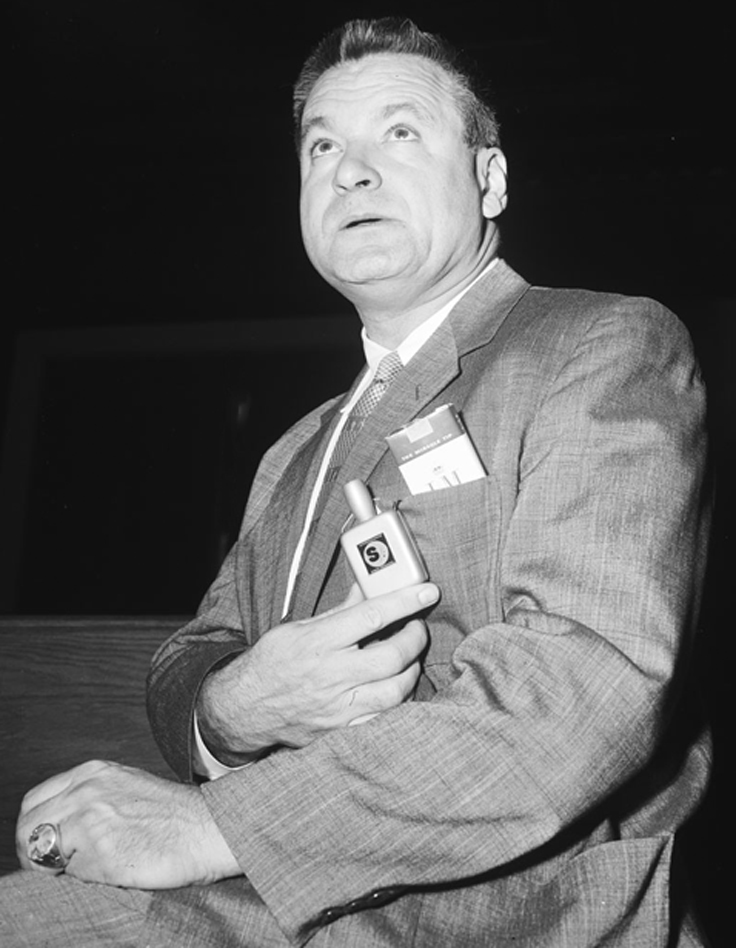
Emmanuel (Bert) Berlant died
1985 April 22, at Cedars-Sinai Hos-
pital, Los Angeles, CA, after a long
illness.
A fellow of the AES and a member
of the Hollywood Sapphire group,
Bert enjoyed a long and successful
career as an electronic engineer,
consultant and manufacturer. He became associated with the New York
experimental theater group during the
mid 1930s and was involved primarily with set design and lighting.
His efforts to improve sound and
lighting led to intensive study in
electronics and research in the field
of optics.
During the early war years (1941 -
1943) Bert became the director of
research for Optical Research, Inc.
of Long Island, New York. One no-
table product developed under his
direct supervision was a 70 mm
combat camera for Signal Corps bat-
tlefield reconnaissance photography.
In 1943 Mr. Berlant went to the
U.S. Signal Corps Photo Center in
Astoria, New York, where he was
retained as an expert consultant to
the Signal Corps Pictorial Engineering Research Laboratories. He remained there as supervisor of the
laboratories until the end of the war
in 1945. During that time he designed
and patented the Robotron camera,
subsequently designated the approved, general purpose camera of
the U. S. Medical Corps. After moving to Los Angeles in 1946 he and
several former associates of the Signal Corps Center founded Berlant
Associates, Inc., which designed,
manufactured, and distributed high-fidelity home music systems.
From 1949-1953 the company introduced several new multitrack
s t e r e o p h o n i c , magnetic tape recorders. Two different series were
presented-the
Berlant concertone
series for high-fidelity home rnusic
systems and the Berlant professional
recorders for recording studios and
radio stations. Bert won a reputation
as a pioneer in the manufacture of
stereophonic and high-fidelity music
equipment.
During this period the industry was
changing from radio vacuum tubes to solid state (transistor) operation.
Bert's companies were one of the first
manufacturers to convert to total solid
state equipment. It was during that
time that Bert became a fellow of the
Audio Engineering Society for his
contribution to the art of magnetic
recording. Active in trade associations, Berlant helped found the Institute of High Fidelity Manufacturers
and served for four years as the West
Coast Electronic Manufacturing Association representative on the board
of directors of' the National Trade
Show.
In 1956 Bert left Berlant Associates
and became president of Stephens
Trusonic, Inc., a manufacturer of
professional microphones and theater
loudspeaker systems. He redesigned
the entire loudspeaker line and introduced it to the high-fidelity home
music market. In 1960 he became an
independent engineering and product
management consultant for various
electronic firms. In 1963 Packard Bell
Electronics, Inc. enticed Bert to join
them with an unusual working arrangement. During the next few years
he served in the following capacities:
product manager, senior research
scientist, corporate planning, assistant to the president, and as director
of operations for Teledyne Commercial Products. Inc.
An ardent student and collector of
southwest American lndian art, Bert
was president of Amerind Art' Inc" in
quality American
since 1972. In the
Indian art
last few years he designed a radically
new loudspeaker with improved
acoustical ambiance. This loudspeaker designed for digital use
was appropriately named the "Omnient" for its design shortly before his
death.
Berlant will always be remembered
by his close friends and associates
as a dedicated, innovative engineer
with an open mind, trying nonconventional approaches to engineering
problems.
He is survived by his wife Gertrude
and two sons, Tony and Jeffrey.
J. Audio Eng. Soc., Vol. 33, No. 718, 1985 .luly/August
Another interesting evolution was the Berlant Concertone > Concord > Teac connection
Teac/Concertone 505 1960 - $495
This concertone was built by Teac. Here's the Teac version
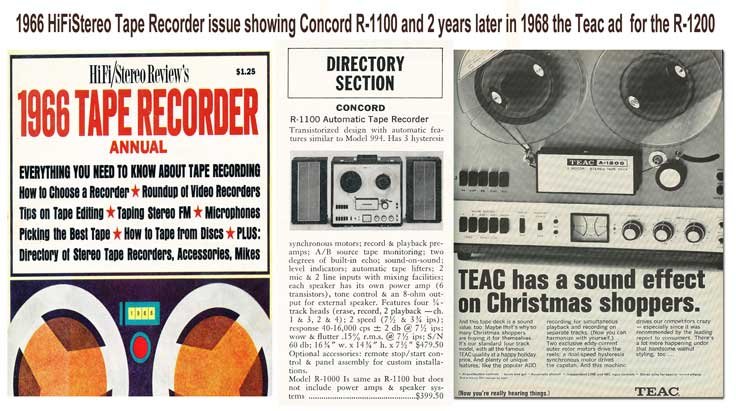
In our collection
Berlant Concertone 20/20 - 1954 - $545.00 Instruction & service manual cover specifications |
Berlant Concertone 20/20 Series 30 1954 - $545 |
Concord 444 '65 Directory Concord built by Concertone/Teac Japan |
|
Concertone 800 series "Reverse-O-Matic" 1964 $468.47 Phantom used one of these in the middle '60's, however the solenoids failed and we moved to Sony products. What a great looking recorder. (64, 65, 66) catalog specifications click to enlarge image 1965 ads 1 2 3 4 5 Phantom's Concertone 800 six head ad was used in the feb 2007 Radio magazine '65 catalog listing $397.46 '65 Directory '66 catalog listing $468.47 '66 Allied Christmas catalog $349 '66 Lafayette catalog listing $359.50
This is an operating unit with two external matching speakers. Similar unit owned by Phantom Productions in 1966-67 (below). Sold in 1966 for $468.47. Martin's equipment in 1967 Concertone 801 was featured in the Doris Day - Rock Hudson movie "Send Me No Flowers!"clip Concertone 800 Brochure Concertone Tape Timer Other Site resources: Go to Get Reel's Concertone page click on picture for larger view Note Concertone recording tape in picture above |
'67 catalog listing#1 $439.95 '67 catalog listing#2 $349.95 '67 catalog listing#3 $299.95
No longer in collection |
